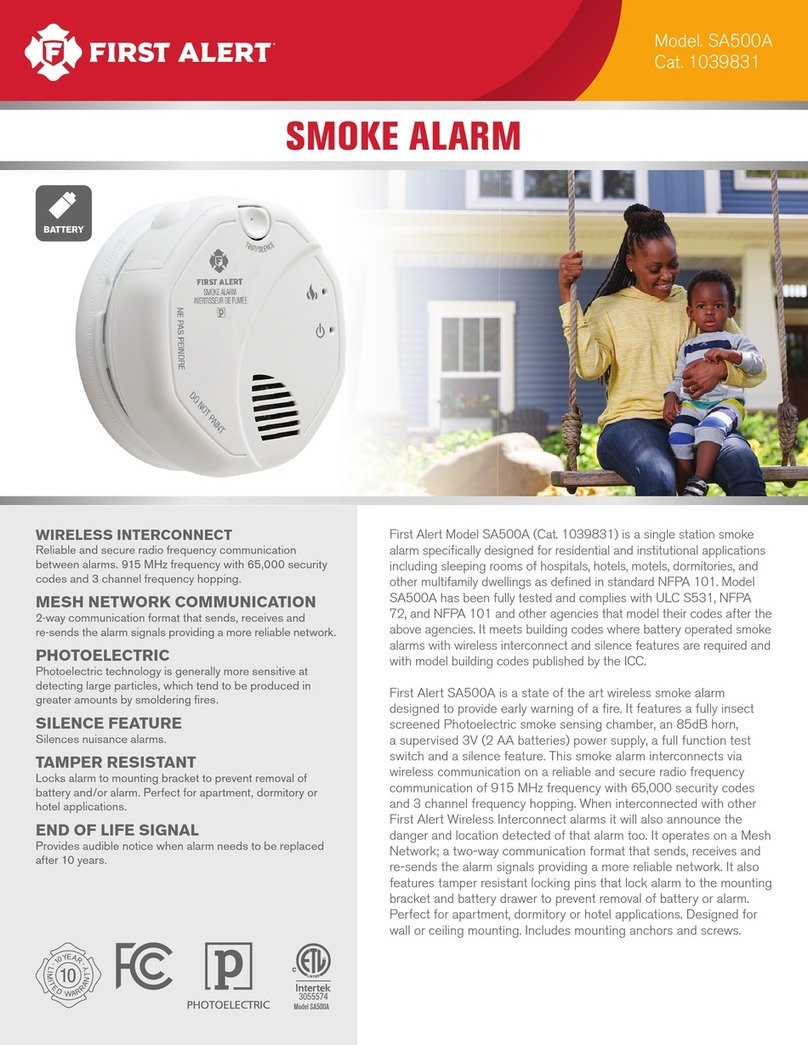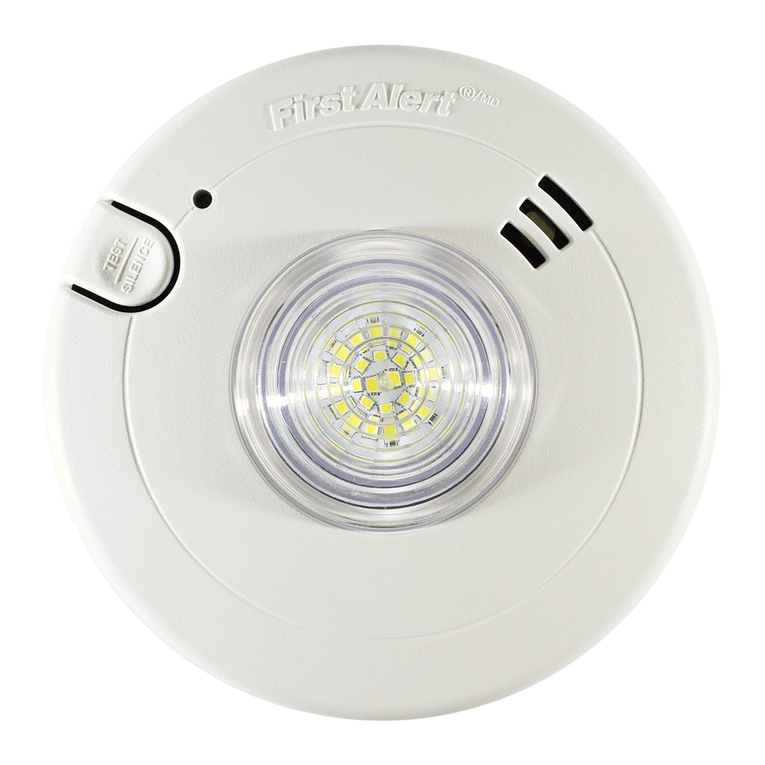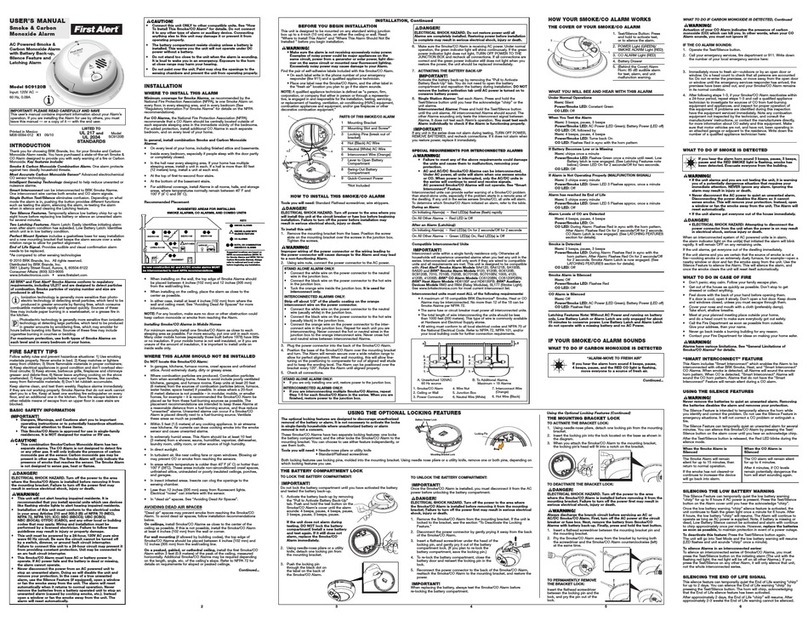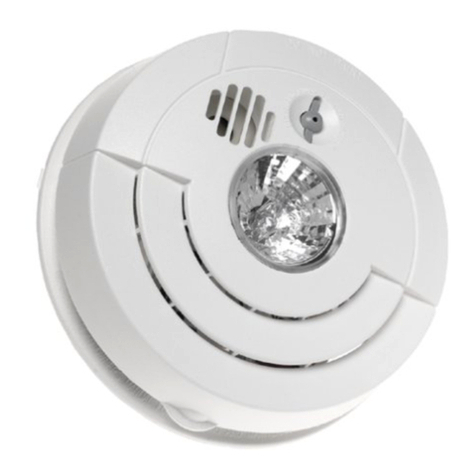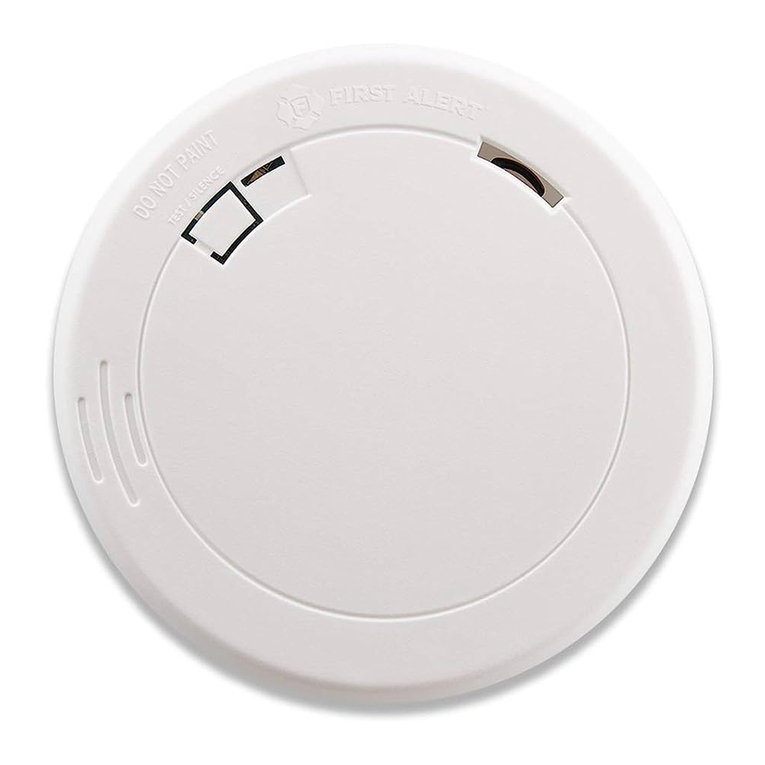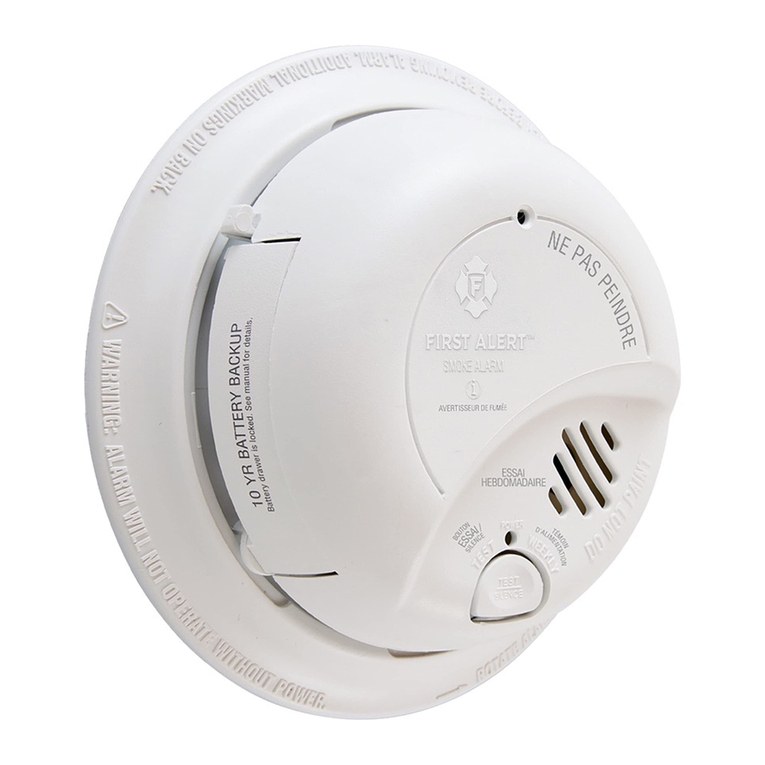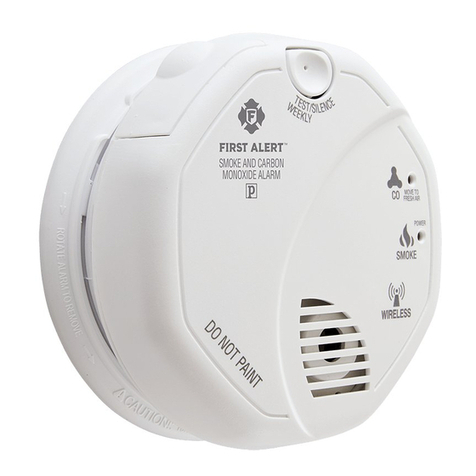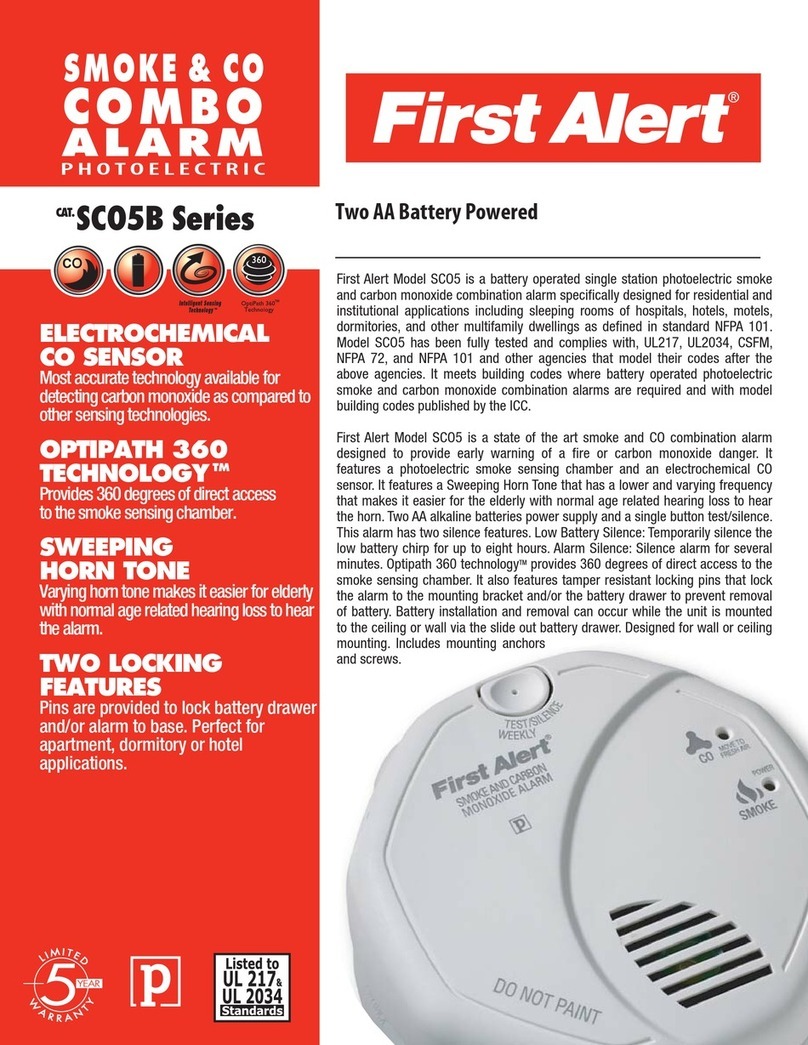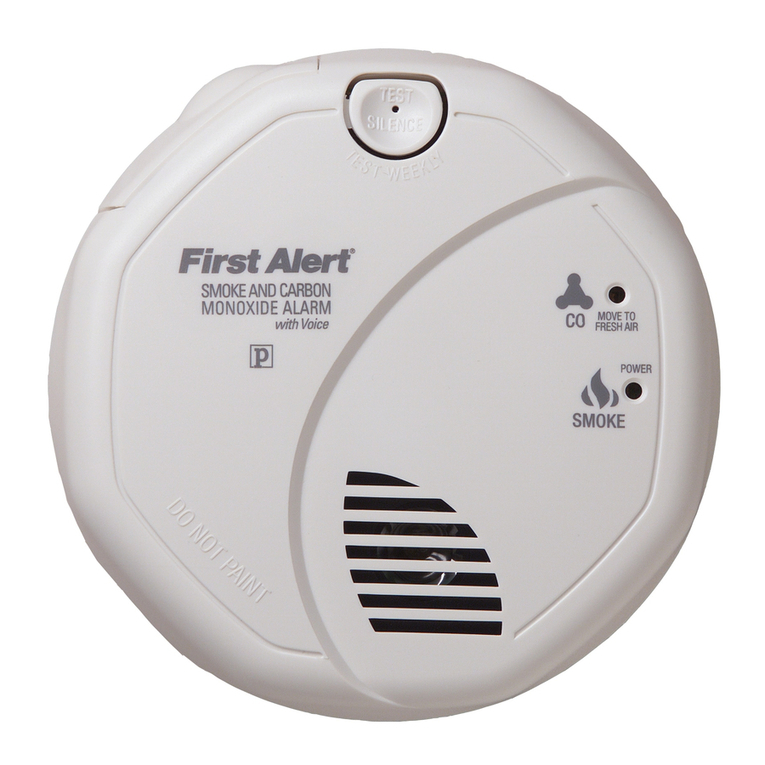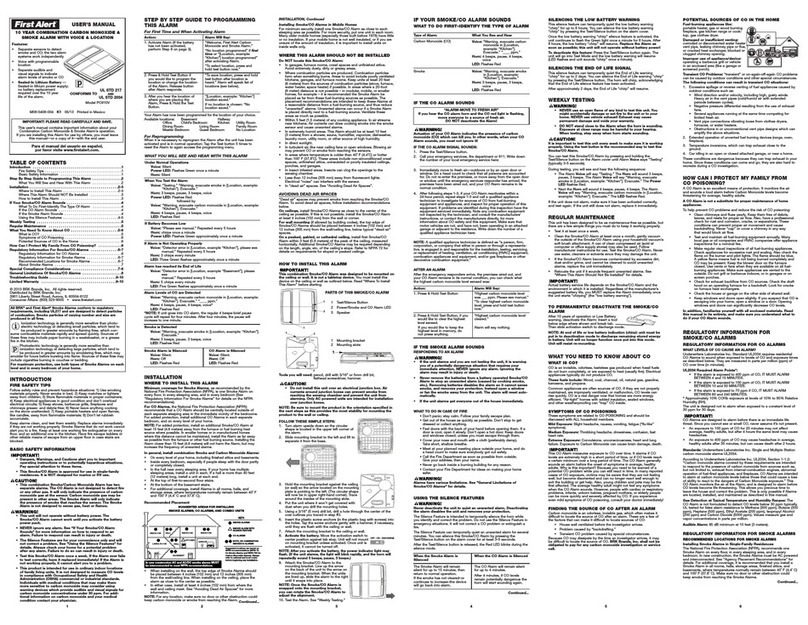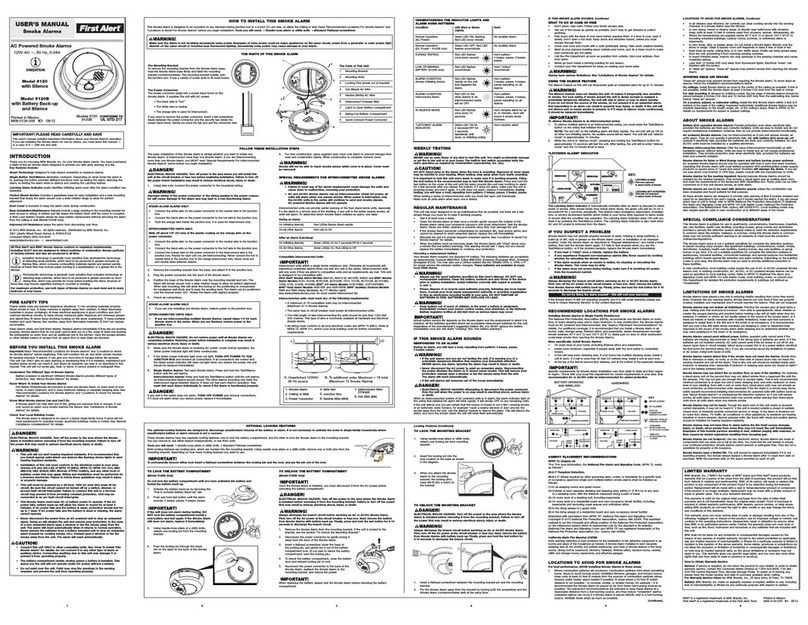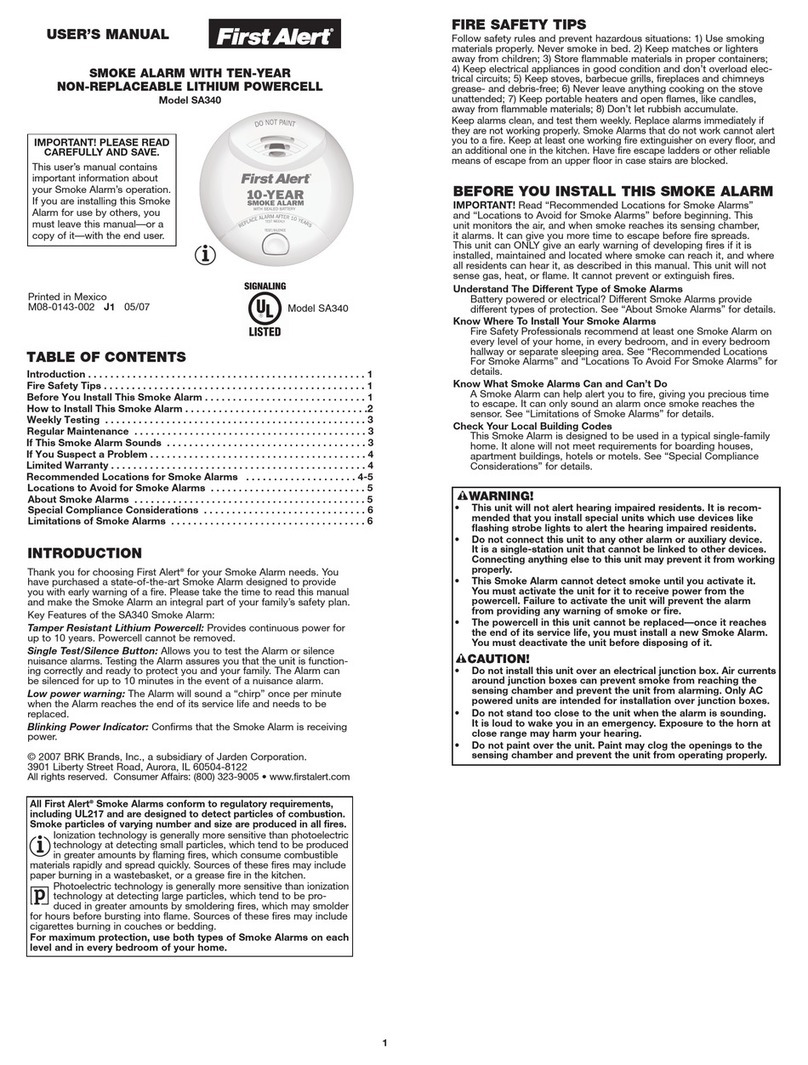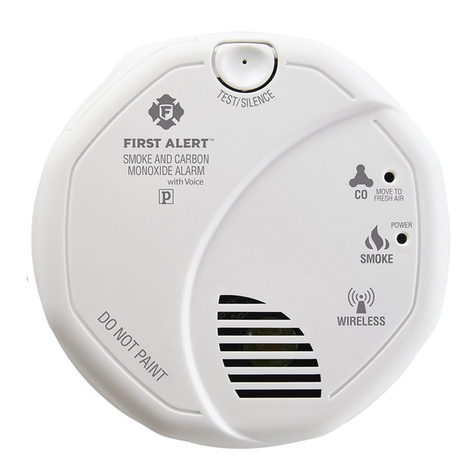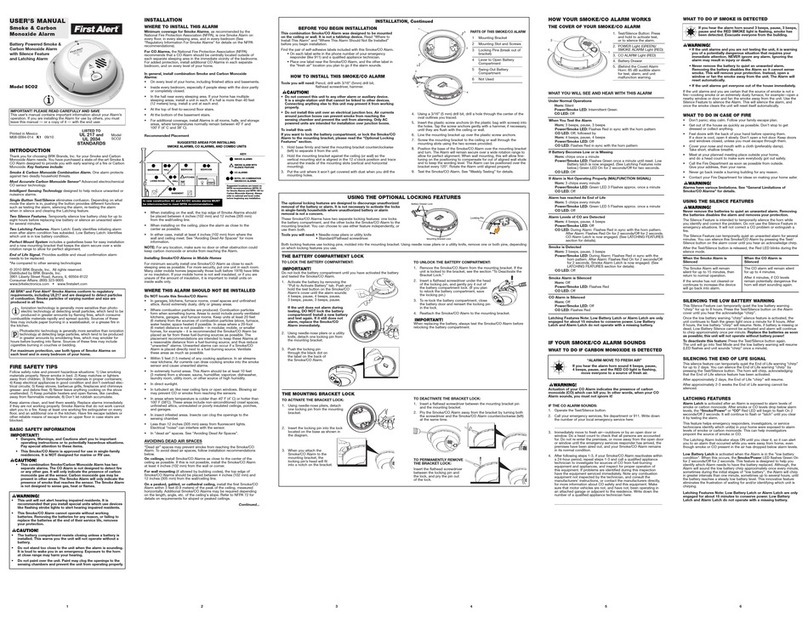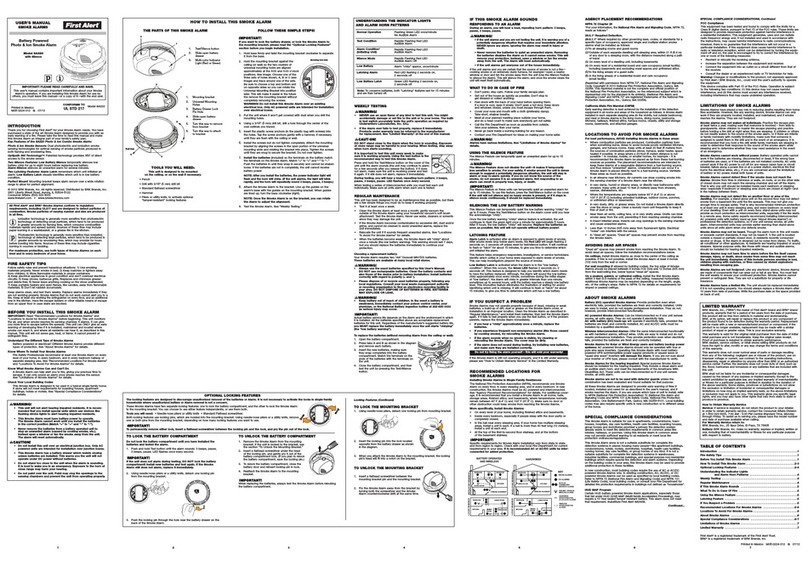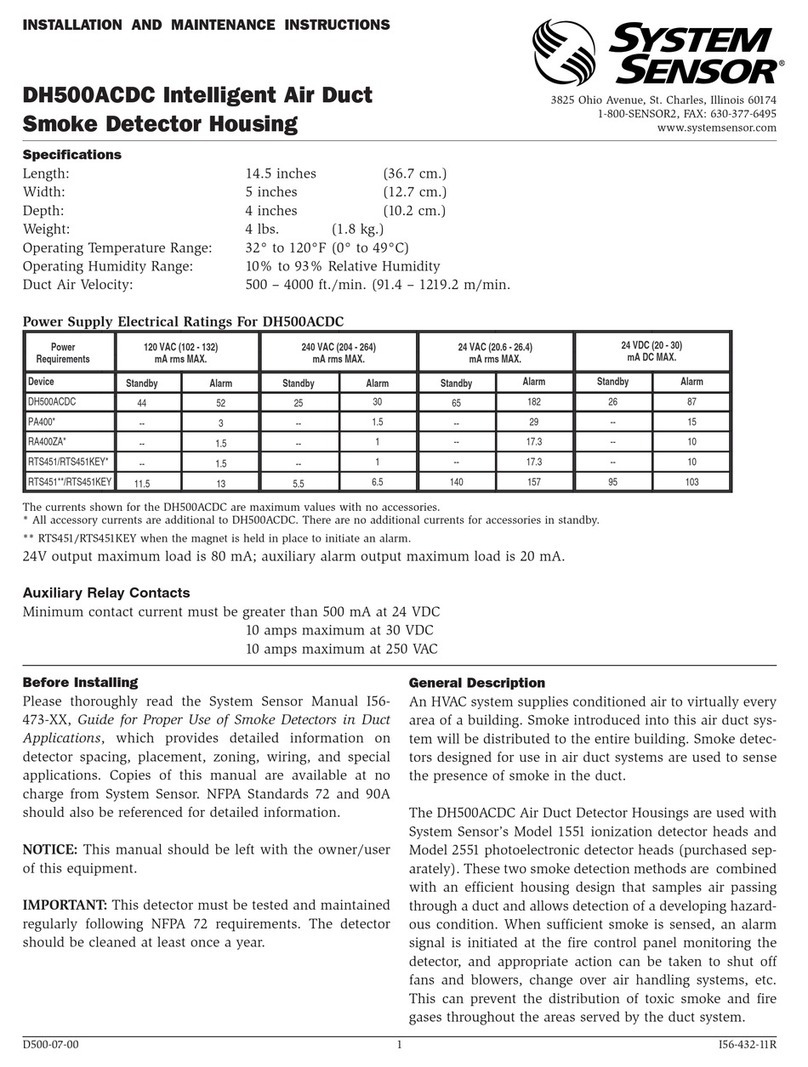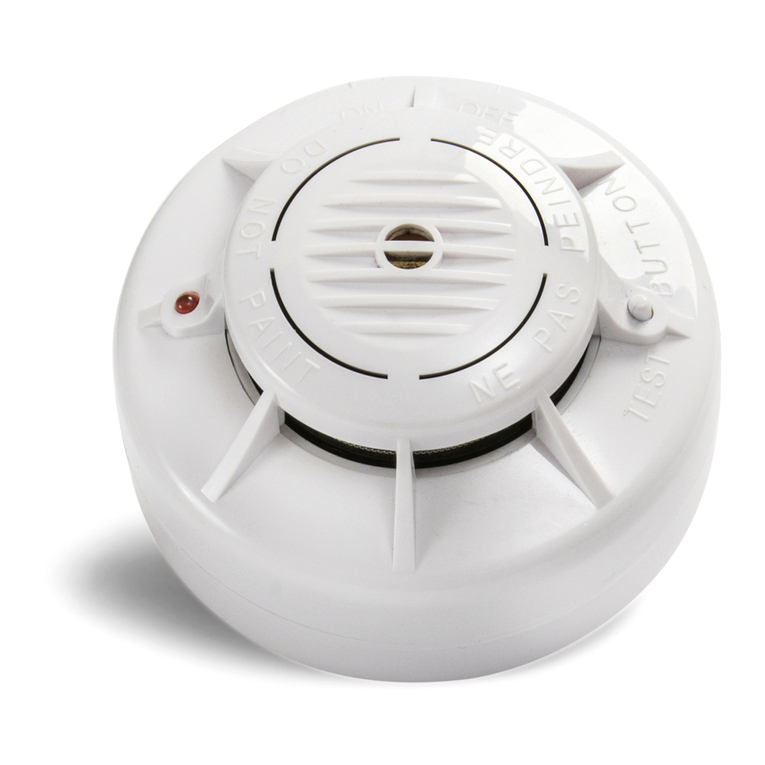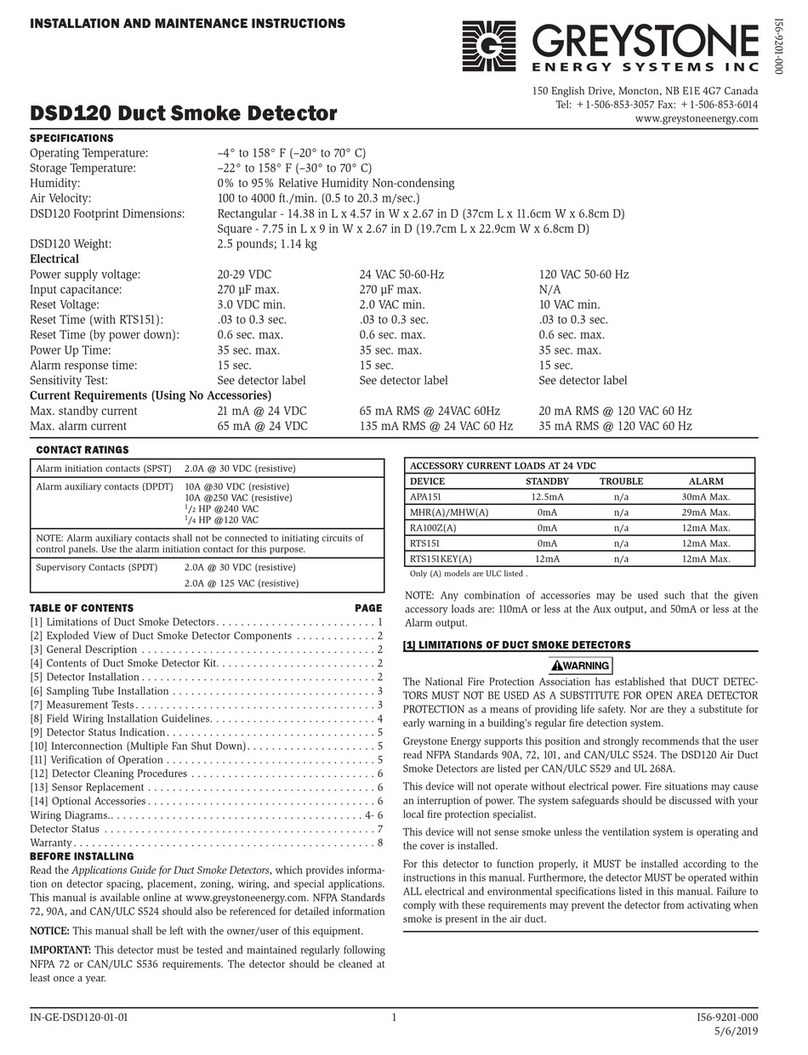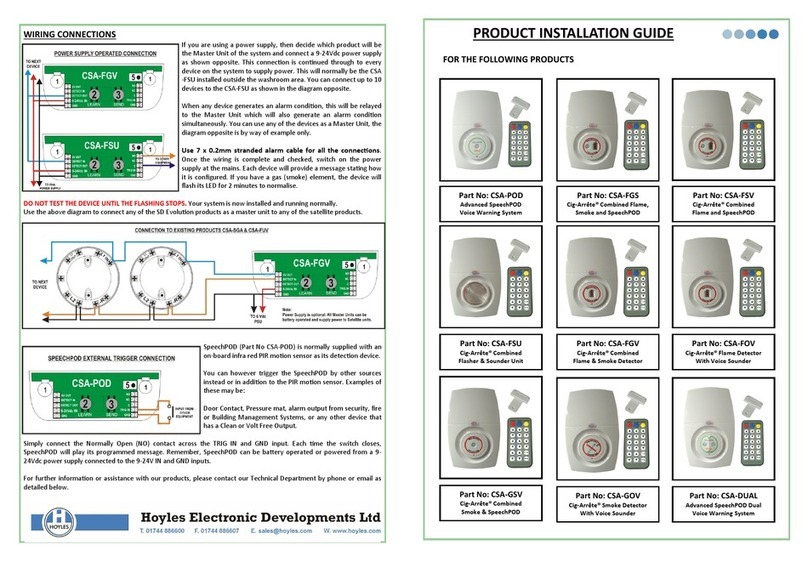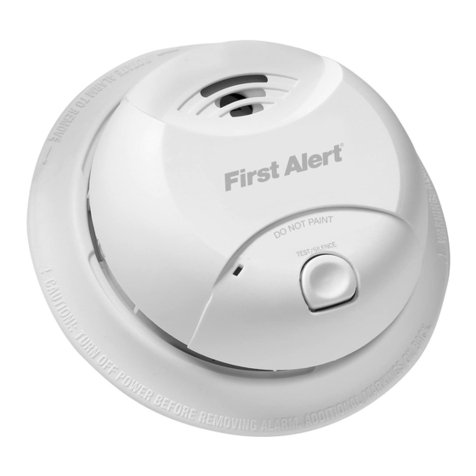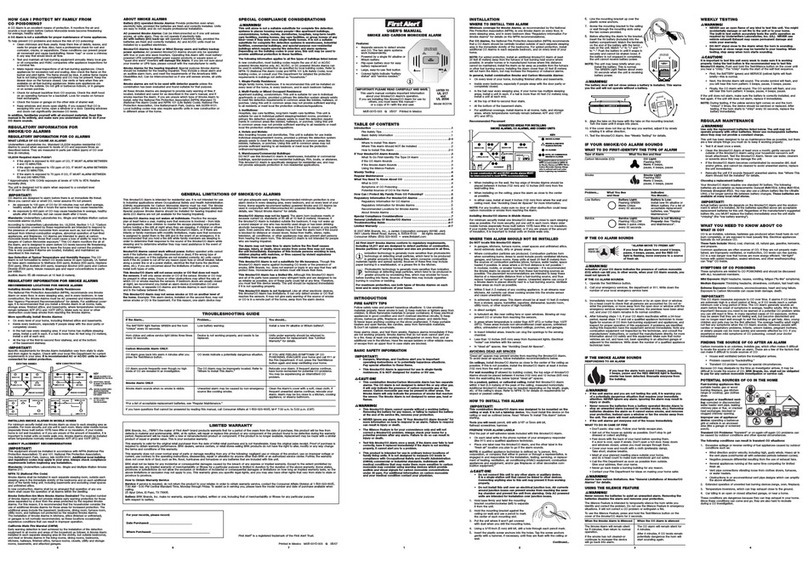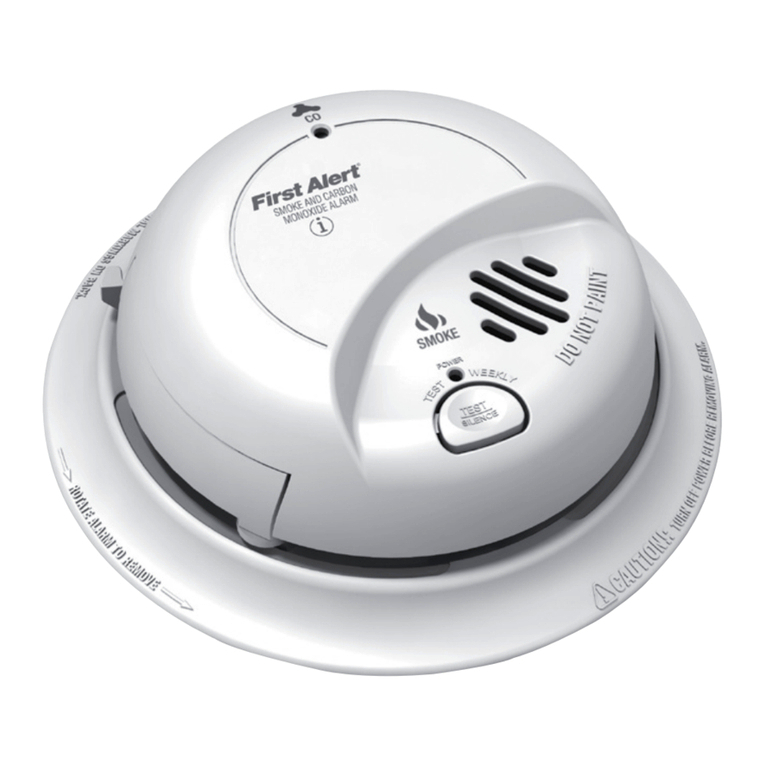
SILENCING THE LOW BATTERY WARNING
This silence feature can temporarily quiet the low battery warning “chirp”. Press the Test/Silence button on the alarm. Once the low battery warning “chirp” silence feature is activated, the unit
continues to flash the Green light once a minute. After time, the low battery “chirp” will resume. Replace the batteries as soon as possible; this unit will not operate without battery power!
To deactivate this feature: Press the Test/Silence button again. The unit will go into Test Mode and the low battery warning will resume (LED flashes and unit sounds “chirp” once a minute).
SILENCING THE END OF LIFE SIGNAL
This silence feature can temporarily quiet the End of Life warning “chirp” for up to 2 days. You can silence the End of Life warning “chirp” by pressing the Test/Silence
button. The horn will chirp, acknowledging that the End of Life silence feature has been activated. After approximately 2 days, the End of Life “chirp” will resume.
WHAT YOU NEED TO KNOW ABOUT CO: WHAT IS CO?
CO is an invisible, odorless, tasteless gas produced when fossil fuels do not burn completely, or are exposed to heat (usually fire). Electrical appliances
typically do not produce CO. These fuels include: Wood, coal, charcoal, oil, natural gas, gasoline, kerosene, and propane. Common appliances are often
sources of CO. If they are not properly maintained, are improperly ventilated, or malfunction, CO levels can rise quickly. CO is a real danger now that homes
are more energy efficient. “Air-tight” homes with added insulation, sealed windows, and other weatherproofing can “trap” CO inside.
FINDING THE SOURCE OF CO AFTER AN ALARM
Carbon monoxide is an odorless, invisible gas, which often makes it difficult to locate the source of CO after an alarm.
These are a few of the factors that can make it difficult to locate sources of CO:
•
House well ventilated before the investigator arrives.
•
Problem caused by “backdrafting.”
•
Transient CO problem caused by special circumstances.
Because CO may dissipate by the time an investigator arrives, it may be difficult to locate the source of CO.
BRK Brands, Inc. shall not be obligated to pay for any carbon monoxide investigation or service call.
POTENTIAL SOURCES OF CO IN THE HOME
Fuel-burning appliances like: portable heater, gas or wood burning fireplace, gas kitchen range or cooktop, gas clothes dryer.
Damaged or insufficient venting: corroded or disconnected water heater vent pipe, leaking chimney pipe or flue, or cracked heat exchanger, blocked or clogged chimney opening.
Improper use of appliance/device: operating a barbecue grill or vehicle in an enclosed area (like a garage or screened porch).
Transient CO Problems: “transient” or on-again-off-again CO problems can be caused by outdoor conditions and other special circumstances.
The following conditions can result in transient CO situations:
1.
Excessive spillage or reverse venting of fuel appliances caused by outdoor conditions such as:
•
Wind direction and/or velocity, including high, gusty winds. Heavy air in the vent
pipes (cold/humid air with extended periods between cycles).
•
Negative pressure differential resulting from the use of exhaust fans.
•
Several appliances running at the same time competing for limited fresh air.
•
Vent pipe connections vibrating loose from clothes dryers, furnaces, or water heaters.
•
Obstructions in or unconventional vent pipe designs which can amplify the above situations.
2.
Extended operation of unvented fuel burning devices (range, oven, fireplace).
3.
Temperature inversions, which can trap exhaust close to the ground.
4.
Car idling in an open or closed attached garage, or near a home.
These conditions are dangerous because they can trap exhaust in your home. Since these
conditions can come and go, they are also hard to recreate during a CO investigation.
HOW CAN I PROTECT MY FAMILY FROM CO POISONING?
A CO Alarm is an excellent means of protection. It monitors the air and sounds a loud alarm before Carbon Monoxide levels become threatening
for average, healthy adults. A CO Alarm is not a substitute for proper maintenance of home appliances.
To help prevent CO problems and reduce the risk of CO poisoning:
•
Clean chimneys and flues yearly. Keep them free of debris, leaves, and nests for proper air flow. Also, have a professional check for rust and corrosion, cracks, or
separations. These conditions can prevent proper air movement and cause backdrafting. Never “cap” or cover a chimney in any way that would block air flow.
•
Test and maintain all fuel-burning equipment annually. Many local gas or oil companies and HVAC companies offer appliance inspections for a nominal fee.
•
Make regular visual inspections of all fuel-burning appliances. Check appliances for excessive rust and scaling. Also check the flame on the burner and pilot lights. The flame
should be blue. A yellow flame means fuel is not being burned completely and CO may be present. Keep the blower door on the furnace closed. Use vents or fans when they
are available on all fuel-burning appliances. Make sure appliances are vented to the outside. Do not grill or barbecue indoors, or in garages or on screen porches.
•
Check for exhaust backflow from CO sources. Check the draft hood on an operating furnace for a backdraft. Look for cracks on furnace heat exchangers.
•
Check the house or garage on the other side of shared wall.
•
Keep windows and doors open slightly. If you suspect that CO is escaping into your home, open a window or a door. Opening windows and doors can significantly decrease CO levels.
In addition, familiarize yourself with all enclosed materials. Read this manual in its entirety, and make sure you understand what to do if your CO Alarm sounds.

